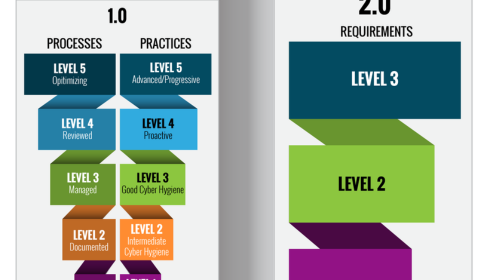What Budget Friendly Approaches Align with CMMC Level 2 Requirements

Adapting to CMMC level 2 requirements feels overwhelming for many smaller contractors, especially when budgets are tight and resources are stretched. The good news is that meeting compliance doesn’t always demand massive spending if the right strategies are put in place. By focusing on practical methods that align with CMMC compliance requirements, firms can make steady progress without financial strain.
Prioritizing Highest Risk Controls First
Budget-conscious compliance efforts succeed by tackling the riskiest areas before anything else. CMMC compliance requirements emphasize protecting controlled unclassified information, which means that gaps in access controls, audit logging, or encryption quickly rise to the top of the list. Addressing those areas early ensures limited funds are focused on what auditors and C3PAO assessors look for most closely during CMMC level 2 compliance evaluations.
This approach mirrors triage in healthcare—fixing what poses the greatest harm before moving on to lesser issues. By taking this order of operations, companies achieve stronger security per dollar spent, while also satisfying milestones that overlap with CMMC level 1 requirements. It also builds a clear roadmap that management can understand and fund gradually instead of dumping resources into low-impact measures first.
Using Managed Services Instead of Full Internal Teams
Employing a full-time cybersecurity department is not realistic for many smaller firms. Managed service providers offer an affordable alternative by supplying 24/7 monitoring, patch management, and compliance tracking under a subscription model. Outsourcing these responsibilities makes CMMC level 2 compliance more attainable without requiring the salary costs of an in-house team.
CMMC RPO organizations often partner with contractors to deliver affordable compliance guidance, while managed security service providers reduce technical overhead. This mix gives firms access to specialized knowledge that aligns with both CMMC level 1 requirements and advanced CMMC level 2 requirements, creating a hybrid model that is predictable in cost and easier to sustain long term.
Emphasizing User Awareness Training for Cost Return
Human error remains one of the largest sources of security breaches. User awareness programs are a cost-friendly investment that provide measurable returns in reducing incidents. Training employees on phishing detection, secure password practices, and data handling directly supports CMMC compliance requirements for access control and awareness standards.
Compared to expensive infrastructure upgrades, awareness training pays off quickly. It reduces the likelihood of costly incidents while fulfilling multiple CMMC level 2 requirements. Even small firms can roll out modular training platforms that keep employees informed and reinforce compliance practices in a budget-friendly way.
Negotiating Vendor Discounts Through Specialization
Technology vendors often extend discounts to companies working toward CMMC compliance requirements. By consolidating services under fewer providers or working through industry groups, firms gain bargaining power that lowers recurring costs. Vendors specializing in CMMC level 2 compliance typically offer bundled services that cover monitoring, documentation, and reporting needs at a reduced rate.
Engaging with C3PAO firms early can also help identify which tools or services are truly necessary and which can be trimmed. Negotiated savings free up resources to handle gaps that can’t be solved through software alone, such as detailed documentation or ongoing testing required under CMMC level 2 requirements.
Documenting Minimal Viable Compliance Artifacts
Documentation is an area where companies often overspend time and money. Instead of producing lengthy manuals that auditors never read, firms can adopt a minimal viable approach. This means creating records that meet the letter of CMMC compliance requirements without unnecessary detail.
For example, access policies can be outlined in concise formats, backed by automated system logs that serve as proof. This reduces overhead while still keeping auditors satisfied. CMMC RPO consultants often recommend this approach because it balances effort and cost, helping firms meet CMMC level 2 compliance without excessive documentation spending.
Testing Controls in Phases to Spread Costs
Large-scale control testing drains budgets quickly. Instead, smaller firms can test controls in phases, breaking assessments into manageable chunks across the fiscal year. This prevents one-time spikes in spending and allows issues to be corrected before final assessments by a C3PAO.
Phased testing also builds institutional knowledge gradually, which helps smaller IT teams adapt without being overwhelmed. Each phase demonstrates measurable progress toward CMMC compliance requirements while keeping financial planning predictable. It’s a strategy that aligns especially well with firms balancing CMMC level 1 requirements alongside more advanced CMMC level 2 requirements.
How Small Firms Stretch Budgets into Ongoing Compliance
Sustaining compliance is just as important as reaching it. Small firms often stretch their budgets by automating routine tasks like log collection and vulnerability scanning. Automation reduces the need for manual oversight, which frees staff to focus on compliance-specific responsibilities. Another method is sharing resources across contracts. For example, templates for incident response or training can be reused across projects to avoid starting from scratch each time. CMMC RPO advisors often recommend such reuse because it creates consistency while saving money. Over time, these strategies make CMMC level 2 compliance less about a single expense and more about an ongoing, manageable process.




